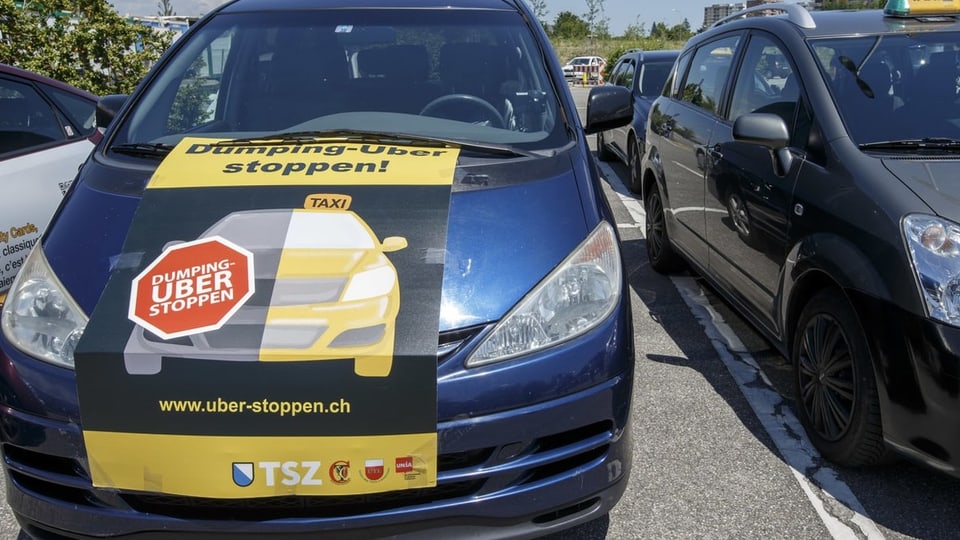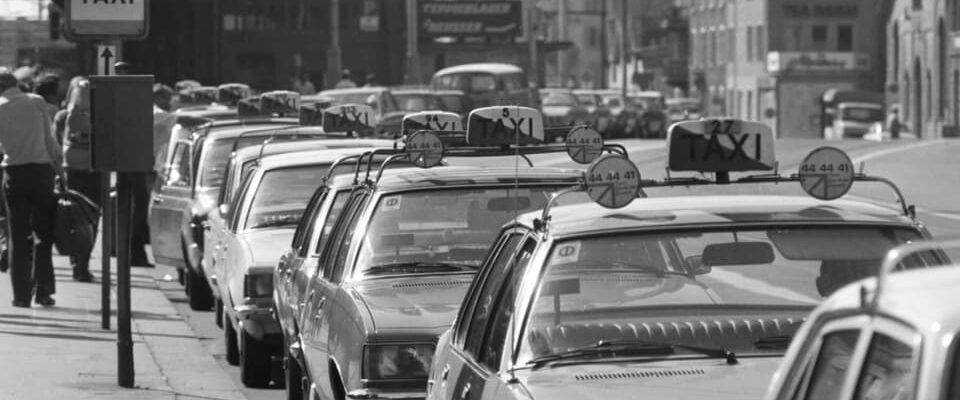contents
Fewer and fewer people use taxis in the city. Competitor Uber and changes in the job market are causing problems for the industry. The situation in the country looks better.
The taxi industry in the big Swiss cities is not doing well. At one of the most important and lucrative locations in the country – Zurich HB – a dreary picture emerged on New Year’s Eve.
Where in the past there was always a lot of activity, this time many drivers stood their legs in the stomach. “The taxi business is dead,” was the unanimous tenor.
Golden times are long gone
Its history may have started earlier, but the taxi really got big with the rise of the automobile in the 1950s. The vehicles with the prominent lights became a fixture in the cityscape. The 1970s, with their oil and energy crises, were the birth of many taxi companies, some of which still exist today – in Basel the “Mini-Cab” and in Bern the “Bear Taxi”.
Legend:
Waiting taxis at Zurich main station in the summer of 1977.
KEYSTONE/PHOTOPRESS ARCHIVE/Str
The high density of taxis also caused chaotic conditions at times. Providers fought for the best places, the authorities tried to get the increasing uncontrolled growth under control.
The situation worsened in the 1990s. In the city of Berne, for example, the need clause and tariff regulations were abolished, which caused the number of drivers to rise sharply. It was similar elsewhere.
The business in the Zwingli town was lucrative enough that in the 2000s a heated argument broke out between urban providers and so-called land taxis, which were accused of “wiping”, i.e. picking up guests throughout the city.
Industry is being transformed
In 2013, a service was launched in Switzerland’s largest city that is still considered to be primarily responsible for the malaise in the taxi industry: Uber.

Legend:
Taxi operators have demonstrated against Uber several times in the recent past. (pictured: Geneva, 2016)
KEYSTONE/Walter Bieri
The app quickly became very popular. Ordering a ride conveniently from your cell phone at any time – that was and is attractive to many. And Uber can also score points when it comes to price. This adapts to the traffic volume. And that is of particular benefit to the passengers.
Where does the future of the taxi lie?
In smaller towns and in the countryside, the situation does not seem to be quite as drastic. In Olten, Baden and Aarau, for example, regulations such as parking spaces or a duty to display a taxi lamp have only recently been introduced. The demand still seems to be there.
The corona crisis may have been overcome more quickly in some places. Various providers are currently reporting pleasing figures in Eastern Switzerland. “Ilg-Taxi” from Frauenfeld recorded a sales increase of almost 100 percent over Christmas and New Year compared to the crisis year 2020.
Far more important and long-term than the competition from Uber and the interim corona consequences could be another negative trend from the point of view of the taxi industry: the shortage of skilled workers.
According to Markus Kunz, Managing Director of the market leader “Nova Taxi”, several dozen jobs could currently be filled in the city of Bern alone. In the past year, however, there has not been a single new appointment. During the pandemic, many seem to have left the industry for good, and the up-and-coming generation is struggling to get excited about the taxi business.
